History
 The American Revolution was a serious embarrassment to Britain, and especially to King George III. The king had to admit that things weren’t going well in the colonies…at least not where Britain was concerned. By now, the colonists had signed the Declaration of Independence that summer, and they were not going to be moved from achieving their goal to be a sovereign nation.
The American Revolution was a serious embarrassment to Britain, and especially to King George III. The king had to admit that things weren’t going well in the colonies…at least not where Britain was concerned. By now, the colonists had signed the Declaration of Independence that summer, and they were not going to be moved from achieving their goal to be a sovereign nation.
On this day, October 31, 1776, the king give a speech to the British Parliament, telling them about the signing of the United States Declaration of Independence and the revolutionary leaders who signed it, saying, “for daring and desperate is the spirit of those leaders, whose object has always been dominion and power, that they have now openly renounced all allegiance to the crown, and all political connection with this country.” I’m sure he felt that the colonists were rebels, who were not worth wasting time on by now, and he  hoped he could walk away from them without losing face any more than he already had. The British never intended for the United States to be anything more than the colones. The king went on to inform Parliament of the successful British victory over General George Washington and the Continental Army at the Battle of Long Island on August 27, 1776, but warned them that, “notwithstanding the fair prospect, it was necessary to prepare for another campaign.” Somehow, the king had the idea that there was still hope to keep the colonies.
hoped he could walk away from them without losing face any more than he already had. The British never intended for the United States to be anything more than the colones. The king went on to inform Parliament of the successful British victory over General George Washington and the Continental Army at the Battle of Long Island on August 27, 1776, but warned them that, “notwithstanding the fair prospect, it was necessary to prepare for another campaign.” Somehow, the king had the idea that there was still hope to keep the colonies.
Despite George III’s harsh words, General William Howe and his brother, Admiral Richard Howe, still hoped to convince the Americans to rejoin the British empire in the wake of the colonists’ humiliating defeat at the Battle of Long Island. They hoped to do  thing peacefully, but that was just not to be. The British could easily have prevented Washington’s retreat from Long Island and captured most of the Patriot officer corps, including the commander in chief. However, instead of forcing the former colonies into submission by executing Washington and his officers as traitors, the Howe brothers let them go with the hope of swaying Patriot opinion towards a return to the mother country. The Howe brothers’ attempts at negotiation failed, and the War for Independence dragged on for another four years, until the formal surrender of the British to the Americans on October 19, 1781, after the Battle of Yorktown. The freedom of the United States was not going to be taken from them…and that was a serious embarrassment to Britain.
thing peacefully, but that was just not to be. The British could easily have prevented Washington’s retreat from Long Island and captured most of the Patriot officer corps, including the commander in chief. However, instead of forcing the former colonies into submission by executing Washington and his officers as traitors, the Howe brothers let them go with the hope of swaying Patriot opinion towards a return to the mother country. The Howe brothers’ attempts at negotiation failed, and the War for Independence dragged on for another four years, until the formal surrender of the British to the Americans on October 19, 1781, after the Battle of Yorktown. The freedom of the United States was not going to be taken from them…and that was a serious embarrassment to Britain.
 Overdue is never a good thing, but there are some times when being overdue is a very bad thing. One of those times is when a plane, train, or ship are overdue. Andrea Gail began her final voyage departing from Gloucester Harbor, Massachusetts, on September 20, 1991, bound for the Grand Banks of Newfoundland off the coast of eastern Canada. After poor fishing, Captain Frank W “Billy” Tyne Jr headed east to the Flemish Cap where he believed they would have better luck. The fishing was much better there, and before long, the crew had filled the storage bins with fish. It was at that point that the ship’s ice machine began malfunctioning. Because they could not maintain the catch without the ice, Tyne set course for home on October 26–27.
Overdue is never a good thing, but there are some times when being overdue is a very bad thing. One of those times is when a plane, train, or ship are overdue. Andrea Gail began her final voyage departing from Gloucester Harbor, Massachusetts, on September 20, 1991, bound for the Grand Banks of Newfoundland off the coast of eastern Canada. After poor fishing, Captain Frank W “Billy” Tyne Jr headed east to the Flemish Cap where he believed they would have better luck. The fishing was much better there, and before long, the crew had filled the storage bins with fish. It was at that point that the ship’s ice machine began malfunctioning. Because they could not maintain the catch without the ice, Tyne set course for home on October 26–27.
The weather reports warned of dangerous weather conditions, and he knew it would be risky, but he thought they could make a run for home, and possibly beat the storm. The problem was that this was no ordinary storm. Two systems were colliding, and creating the perfect storm. It was the perfect situation for an impossible passage for the Andrea Gail. His friend, Linda Greenlaw, tried to warn Tyne not to try it. She was looking at the weather report and she could see that this storm was not one to be taken lightly. Nevertheless, Tyne headed for Massachusetts. His last reported transmission was at about 6:00pm on October 28, 1991, when he radioed Greenlaw, who was the Captain of the Hannah Boden, and gave his coordinates as 44°00 N 56°40 W, or about 162 miles east of Sable Island. He also gave a weather report indicating 30 foot seas and wind gusts up to 80 knots. Tyne’s final recorded words were “She’s comin’ on, boys, and she’s comin’ on strong.” It was reported that the storm created waves in excess of 100 feet in height, but ocean buoy monitors recorded a peak wave height of 39 feet, and so waves of 100 feet were deemed “unlikely” by Science Daily. However, data from a series of weather buoys in the general vicinity of the vessel’s last known location recorded peak wave action exceeding 60 feet in height from October 28 through 30, 1991.
The Andrea Gail was officially reported overdue on October 30, 1991. An extensive air and land search was launched by the 106th Rescue Wing from the New York Air National Guard, United States Coast Guard and Canadian Coast Guard forces. The search would eventually cover over 186,000 square nautical miles. Finally, on November 6, 1991, Andrea Gail’s emergency position-indicating radio beacon (EPIRB) was discovered 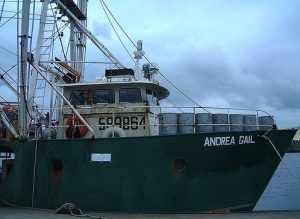 washed up on the shore of Sable Island in Nova Scotia…not the news they were hoping for. The EPIRB was designed to automatically send out a distress signal upon contact with sea water, but the Canadian Coast Guard personnel who found the beacon “did not conclusively verify whether the control switch was in the on or off position”. By November 9th, authorities officially called off the search for the missing Andrea Gail, due to the low probability of crew survival. Fuel drums, a fuel tank, the EPIRB, an empty life raft, and some other flotsam were the only wreckage ever found. The ship was presumed lost at sea somewhere along the continental shelf near Sable Island. Sometimes, overdue is the worst possible situation.
washed up on the shore of Sable Island in Nova Scotia…not the news they were hoping for. The EPIRB was designed to automatically send out a distress signal upon contact with sea water, but the Canadian Coast Guard personnel who found the beacon “did not conclusively verify whether the control switch was in the on or off position”. By November 9th, authorities officially called off the search for the missing Andrea Gail, due to the low probability of crew survival. Fuel drums, a fuel tank, the EPIRB, an empty life raft, and some other flotsam were the only wreckage ever found. The ship was presumed lost at sea somewhere along the continental shelf near Sable Island. Sometimes, overdue is the worst possible situation.
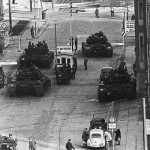 It seems there is always talk of the Third World War coming, and what might set it off. Most people hope that it stays all talk, because the weapons that are available these days could potentially wipe the human race off the planet, or at the very least, wipe whole nations off the map. Sometimes I wonder how we have avoided it so far, considering all the hate in the world today. Somehow our world leaders have held it off…for now. Nevertheless, there have been times when we have come very close to the last straw that would bring World War III. For 16 hours, between October 27 and October 28, 1961, at the height of the Cold War, US and Soviet tanks faced each other in divided Berlin in an action that brought the two superpowers closer to kicking off a third world war than in any other cold-war confrontation, with the exception of the Cuban missile crisis one year later. It was a very heated time in history.
It seems there is always talk of the Third World War coming, and what might set it off. Most people hope that it stays all talk, because the weapons that are available these days could potentially wipe the human race off the planet, or at the very least, wipe whole nations off the map. Sometimes I wonder how we have avoided it so far, considering all the hate in the world today. Somehow our world leaders have held it off…for now. Nevertheless, there have been times when we have come very close to the last straw that would bring World War III. For 16 hours, between October 27 and October 28, 1961, at the height of the Cold War, US and Soviet tanks faced each other in divided Berlin in an action that brought the two superpowers closer to kicking off a third world war than in any other cold-war confrontation, with the exception of the Cuban missile crisis one year later. It was a very heated time in history.
Washington and its British and French allies had failed to stop the Russians from building the Berlin Wall in August of 1961. By October, East German officials began to deny US diplomats the unhindered access to East Berlin that they were required to allow as part of the agreement with Moscow on the postwar occupation of Germany. Then, on 22 October, E Allan Lightner Jr, the senior US diplomat in West Berlin, was stopped by East German border guards on his way to the state opera house in East Berlin. The East Germans demanded to see his passport, which he insisted only Soviet officials had the right to check. The situation grew more heated with this exchange. Lightner was forced to turn back.
General Clay, who was an American hero of the 1948-1949 Berlin Airlift was sent by Washington to deal with the Russians after the erection of the Berlin Wall. He gave orders that the next American diplomat entering East Berlin be escorted by armed US army military police in jeeps. The maneuver succeeded, but the East Germans continued to attempt to assert their claim to control western allied officials entering East Berlin. Never one to suffer defeat easily, Clay ordered American M48 tanks to head for Checkpoint Charlie. There they stood, some 80 yards from the border, noisily racing their engines and sending plumes of black smoke into the night air. Alarmed by the apparent threat, Moscow, with the approval of the Soviet leader, Nikita Khrushchev, sent an equal number of Russian T55 tanks rumbling to face down the Americans. They too ground to a halt some 80 yards from the East/West Berlin border and, as with the US tanks they faced, stayed there for 16 hours.
American officials were becoming more and more alarmed by the potential consequences. General Clay was quickly reminded by Washington that Berlin was not so “vital” an interest to be worth risking a conflict with Moscow. President Kennedy approved the opening of a back channel with the Kremlin in order to defuse the situation that had blown up. As a result, the Soviets pulled back one of their T55s from the eastern side of the border at Friedrichstrasse and minutes later an American M48 also left the scene. That was how it went until all the tanks were withdrawn. General Clay’s reputation among West Berliners rose, but not so much his warrior capabilities as far as the united States was concerned. Khrushchev had been equally uninterested in risking a 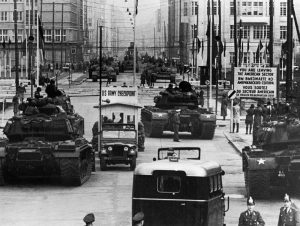 battle over Berlin. In return for Kennedy’s assurance that the west had no designs on East Berlin, the Soviet leader tacitly recognised that allied officials and military personnel would have unimpeded access to the East German capital. From that point on, the western allies freely dispatched diplomats and military personnel to attend the opera and theater in East Berlin. Soviet diplomats, too, attended functions in West Berlin and sent Volga limousines packed with Soviet military police on patrol to West Berlin. The elaborate routine served to prove that the Four Power status of the city was intact. It was faithfully observed until the Wall fell in 1990. they weren’t as eager to start World War III as they thoughts they were.
battle over Berlin. In return for Kennedy’s assurance that the west had no designs on East Berlin, the Soviet leader tacitly recognised that allied officials and military personnel would have unimpeded access to the East German capital. From that point on, the western allies freely dispatched diplomats and military personnel to attend the opera and theater in East Berlin. Soviet diplomats, too, attended functions in West Berlin and sent Volga limousines packed with Soviet military police on patrol to West Berlin. The elaborate routine served to prove that the Four Power status of the city was intact. It was faithfully observed until the Wall fell in 1990. they weren’t as eager to start World War III as they thoughts they were.
 Jumping out of a plane with a parachute, while not something I would consider doing, has become a favorite pastime for many people, but the original parachute jump was not from an airplane. The first noteworthy parachute jump was made by André-Jacques Garnerin from a hydrogen balloon 3,200 feet above Paris. Apparently, Leonardo da Vinci first conceived the idea of the parachute in his writings, and Frenchman, Louis-Sebastien Lenormand fashioned a kind of parachute out of two umbrellas and jumped from a tree in 1783. But, Garnerin was the first person to actually design and test parachutes capable of slowing a man’s fall from an altitude higher than a tree.
Jumping out of a plane with a parachute, while not something I would consider doing, has become a favorite pastime for many people, but the original parachute jump was not from an airplane. The first noteworthy parachute jump was made by André-Jacques Garnerin from a hydrogen balloon 3,200 feet above Paris. Apparently, Leonardo da Vinci first conceived the idea of the parachute in his writings, and Frenchman, Louis-Sebastien Lenormand fashioned a kind of parachute out of two umbrellas and jumped from a tree in 1783. But, Garnerin was the first person to actually design and test parachutes capable of slowing a man’s fall from an altitude higher than a tree.
I can almost hear the wheels turning in Garnerin’s head, as he first pondered the possibility of using air resistance to slow an individual’s fall from a high altitude, while he was a prisoner of war during the French Revolution. Although he never employed a parachute to escape from the high ramparts of the Hungarian prison where he spent three years, Garnerin never lost interest in the concept of the parachute. In 1797, he completed his first parachute, a canopy 23 feet in diameter and attached to a basket with suspension lines.
On October 22, 1797, Garnerin attached the parachute to a hydrogen balloon and ascended to an altitude of 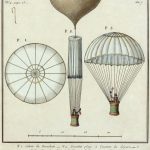 3,200 feet. He then climbed into the basket and severed the parachute from the balloon. Parachutes need an air vent in the top, unbeknownst to Garnerin. As he failed to include said air vent at the top of the prototype, Garnerin’s parachute oscillated wildly in his descent. He landed shaken but unhurt half a mile from the balloon’s takeoff site. In 1799, Garnerin’s wife, Jeanne-Genevieve, became the first female parachutist. In 1802, Garnerin made a spectacular jump from 8,000 feet during an exhibition in England. He died in a balloon accident in 1823 while preparing to test a new parachute. I suppose it could be said that he died doing what he loved. Nevertheless, it would be an awful way to go, if you ask me.
3,200 feet. He then climbed into the basket and severed the parachute from the balloon. Parachutes need an air vent in the top, unbeknownst to Garnerin. As he failed to include said air vent at the top of the prototype, Garnerin’s parachute oscillated wildly in his descent. He landed shaken but unhurt half a mile from the balloon’s takeoff site. In 1799, Garnerin’s wife, Jeanne-Genevieve, became the first female parachutist. In 1802, Garnerin made a spectacular jump from 8,000 feet during an exhibition in England. He died in a balloon accident in 1823 while preparing to test a new parachute. I suppose it could be said that he died doing what he loved. Nevertheless, it would be an awful way to go, if you ask me.
 Today is National Sweetest Day, and it is not to be confused with Valentine’s Day. Where Valentine’s Day is is for people in love. National Sweetest Day got its beginnings, through a holiday founded by the National Confectioners’ Association in 1916 called Candy Day. On October 14, 1916, candy shops around the country filled newspapers announcing their sweetest treats and delights. National Sweetest Day is a day that encourages everyone to be generous even in the smallest ways. It reminds us that even small tokens of kindness improve the lives of those around us, who are suffering or going without. The day might have begun with candy and sweets, and may have encouraged us to take home sweets to our sweethearts and friends…similar to Valentine’s Day, but evolved into something very different. The earliest mentions of the “Sweetest Day of the Year” were in several advertisements found in Indiana, Minnesota, and Texas newspapers. It was not the official name of the day…not yet. In 1917 with war raging in Europe, many retailers encouraged patrons to “Get one for yourself and one for the boys overseas!”
Today is National Sweetest Day, and it is not to be confused with Valentine’s Day. Where Valentine’s Day is is for people in love. National Sweetest Day got its beginnings, through a holiday founded by the National Confectioners’ Association in 1916 called Candy Day. On October 14, 1916, candy shops around the country filled newspapers announcing their sweetest treats and delights. National Sweetest Day is a day that encourages everyone to be generous even in the smallest ways. It reminds us that even small tokens of kindness improve the lives of those around us, who are suffering or going without. The day might have begun with candy and sweets, and may have encouraged us to take home sweets to our sweethearts and friends…similar to Valentine’s Day, but evolved into something very different. The earliest mentions of the “Sweetest Day of the Year” were in several advertisements found in Indiana, Minnesota, and Texas newspapers. It was not the official name of the day…not yet. In 1917 with war raging in Europe, many retailers encouraged patrons to “Get one for yourself and one for the boys overseas!”
By April of 1918, the United States officially entered the war in Europe and with that came rationing. Sugar, as well as many other commodities, became scarce. The holiday that was starting to see such success was shelved. With the end of the war in 1919, sweetness returned to October. So sweet in fact, Candy Day became an entire week. Then in 1923, the day kicked into the full charitable swing. Sweetest Day’s theme of charity and giving became apparent in 1921 when the Detroit Retail Confectioners, Detroit Wholesale Confections Club, Detroit Jobbing Confectioners Association and the Michigan Confectioners Club joined forces with the Red Cross to distribute thousands of bags of candy to hospitals, orphanages, shelters and homes across Michigan. The celebration also included 100 regulation army target balloons which dropped coupons worth a box of candy. In 1929, Sweetest Day settled into its current home, the third Saturday in October.
Now, National Sweetest Day is a day to take care of all those who need care. The theory is that even those who need a lot of care, when given the smallest token of kindness will feel the effects. We have seen that in the many videos where someone brings a meal to a homeless person. A little treat, a card, a show of support during a time of need may be the sweetest gift on this day. Of course, a card would not do much for a homeless, and candy wouldn’t do much for them either, but a piece of candy would put a smile on their face,  simply because it would be so unexpected. National Sweetest Day could also be a day for random acts of kindness. A day do something nice for someone else. There is so little of that in the world in this day and age, and maybe what started out as a specific day to do something nice for others, could eventually become a daily random acts of kindness day. Originally designated to be celebrated the second Saturday of every October, the confectioners’ convention in Detroit in May of 1916 made the final resolution. Walter C. Hughes, the secretary of the National Confectioners’ Association, encouraged Americans to patronizes their local candy shops, bakers, and druggist for the highest quality confections.
simply because it would be so unexpected. National Sweetest Day could also be a day for random acts of kindness. A day do something nice for someone else. There is so little of that in the world in this day and age, and maybe what started out as a specific day to do something nice for others, could eventually become a daily random acts of kindness day. Originally designated to be celebrated the second Saturday of every October, the confectioners’ convention in Detroit in May of 1916 made the final resolution. Walter C. Hughes, the secretary of the National Confectioners’ Association, encouraged Americans to patronizes their local candy shops, bakers, and druggist for the highest quality confections.
 I’m sure that most you have heard of the theory of Six Degrees of Separation, but in case you haven’t, it is the idea that all living things and everything else in the world are six or fewer steps away from each other, so that a chain of “a friend of a friend” statements can be made to connect any two people in a maximum of six steps. I can’t say that I have ever doubted that idea, but I really never gave it much thought really. The idea was originally set out by Frigyes Karinthy in 1929 and popularized in an eponymous 1990 play written by John Guare. It is sometimes generalized to the average social distance being logarithmic in the size of the population. It is all about what a small world it is. That each person is connected to every other person by just 6 steps. It was something I never have given much thought to.
I’m sure that most you have heard of the theory of Six Degrees of Separation, but in case you haven’t, it is the idea that all living things and everything else in the world are six or fewer steps away from each other, so that a chain of “a friend of a friend” statements can be made to connect any two people in a maximum of six steps. I can’t say that I have ever doubted that idea, but I really never gave it much thought really. The idea was originally set out by Frigyes Karinthy in 1929 and popularized in an eponymous 1990 play written by John Guare. It is sometimes generalized to the average social distance being logarithmic in the size of the population. It is all about what a small world it is. That each person is connected to every other person by just 6 steps. It was something I never have given much thought to.
As I became interested in family history, I could see how that could work in the grand scheme of things, with relation. I came across people who were related to me, as well as, being related to my husband. Those relationships had meaning to me and it also made me think about the six degrees of separation that I had heard about years before.
But the reality is that the six degrees of separation never became so obvious to me as last Sunday when my husband had a heart attack. Instantly, we had a group of people around us. Of those people, all concerned for my husband, I knew no one. I only knew that the two women were nurses, and there was a young man who had seen my husband fall. Somewhere in the parking lot was also a woman who knew she needed to pray for him. When we left for the hospital in the ambulance, I thanked the man from across the distance between us in the parking lot, but I still didn’t know his name. I had no idea how I would ever find out who these people were. I knew they were all heroes, and I didn’t know them. Then the six degrees of separation came into play.
First, my husband was saved, and that was a miracle. It was because of 4 people I not only didn’t know, but had now way of finding. They did what they needed to do, and left expecting nothing in return. We owed them so much, and had no way to thank them. Enter the six degrees of separation. I told my husband’s nurse about what had happened, and when her relief came on the next day, she told her about it, and Stephanie, the day nurse already had the first connection for us. The first nurse to help, Ginger, was her sister. And Ginger had the second connection, because she knew the second nurse, Val. Within a few hours, 2 out of the 4 were now known to us. When when I posted about my husband’s miraculous recovery, our friend, Sierra Schamber tagged someone. It was Sean, the young man who helped him first. Then, a woman named Chelsea called her dad to pray. My boss called a prayer partner, who just happened to be on the wife of Chelsea’s dad. I know all those heroes. I think I fully understand the six degrees of separation.

 Human beings have always had an interest in fire. Of course, fires have been around…forever, but people didn’t always have the ability to control them, or even get them started. Then 1826, John Walker was stirring a pot of chemicals when he noticed a dried lump had formed on the end of the mixing stick. Without thinking, John tried to scrape the dried glob. Suddenly, the stirring stick ignited. Immediately he knew he had found something amazing. So, he made lots more of his “friction lights” to sell at the local bookstore.
Human beings have always had an interest in fire. Of course, fires have been around…forever, but people didn’t always have the ability to control them, or even get them started. Then 1826, John Walker was stirring a pot of chemicals when he noticed a dried lump had formed on the end of the mixing stick. Without thinking, John tried to scrape the dried glob. Suddenly, the stirring stick ignited. Immediately he knew he had found something amazing. So, he made lots more of his “friction lights” to sell at the local bookstore.
The “friction lights” were three inches long and came neatly in a box with a piece of sandpaper. Walker wasn’t interested in patenting the idea, so Samuel Jones copied the matches and sold “Lucifers.” They were a little more practical than Walker’s friction lights. Lucifers were shorter and came in a smaller cardboard box for easy carrying. Too bad John Walker didn’t patent his product. Imagine how rich he would have become. Matches are still used in lots of places.
A Chinese book titled “Records of the Unworldly and the Strange,” by Tao Gu, makes reference to the earliest description of a match-like product. They were called “fire-inch sticks” and used sulfur to start the flame. Still, they were not strikeable, which makes me wonder how they worked exactly. French chemist Jean Chancel invented the first self-igniting match in 1805. Mr. Chancel’s method involved a wooden splint tipped with sugar and potassium chlorate that was carefully dipped into a small bottle of concentrated sulfuric acid. Chancel’s 
 method was highly unpleasant and dangerous. The mix of chemicals produced a yellow smelly gas called chlorine dioxide, which explodes when it comes into contact with pretty much anything. Today, matches are made with non-poisonous red phosphorus, discovered by Johan Edvard Lundstrom. The Diamond Match Company was the first to sell “safety matches” in the United States, forfeiting their patent rights to allow all match companies to produce safe matches. Still, we can trace it all back to the accidental invention of John walker, pharmacist.
method was highly unpleasant and dangerous. The mix of chemicals produced a yellow smelly gas called chlorine dioxide, which explodes when it comes into contact with pretty much anything. Today, matches are made with non-poisonous red phosphorus, discovered by Johan Edvard Lundstrom. The Diamond Match Company was the first to sell “safety matches” in the United States, forfeiting their patent rights to allow all match companies to produce safe matches. Still, we can trace it all back to the accidental invention of John walker, pharmacist.
 On October 13, 1972 a plane crashed somewhere in the Andes Mountains. That isn’t such an unusual event, but the crash was the last part of this event that was not unusual. Flight 571 was en route from Uruguay to Chili at the time it went down. The Uruguayan Air Force plane was chartered by the Old Christians Club to transport the team from Montevideo, Uruguay to Santiago, Chile. On October 12 the twin-engined Fairchild turboprop left Carrasco International Airport. The plane was carrying 5 crew members and 40 passengers. In addition to club members…friends, family, and others were also on board, having been recruited to help pay the cost of the plane. Because of poor weather in the mountains, they were forced to stay overnight in Mendoza, Argentina, before departing at about 2:18 pm the following day, October 13th. Although Santiago was located to the west of Mendoza, the Fairchild was not built to fly higher than approximately 22,500 feet. Because the Andes mountains were higher than that, the pilots plotted a course south to the Pass of Planchón, where the aircraft could safely clear the Andes mountains. An hour after takeoff, the pilot notified air controllers that he was flying over the pass, and shortly thereafter he radioed that he had reached Curicó, Chile, some 110 miles south of Santiago, and had turned north. However, the pilot had misjudged the location of the aircraft, which was still in the Andes mountains. Unaware of the mistake, the controllers cleared him to begin descending in preparation for landing. Then suddenly, the Chilean control tower was unable to contact the plane.
On October 13, 1972 a plane crashed somewhere in the Andes Mountains. That isn’t such an unusual event, but the crash was the last part of this event that was not unusual. Flight 571 was en route from Uruguay to Chili at the time it went down. The Uruguayan Air Force plane was chartered by the Old Christians Club to transport the team from Montevideo, Uruguay to Santiago, Chile. On October 12 the twin-engined Fairchild turboprop left Carrasco International Airport. The plane was carrying 5 crew members and 40 passengers. In addition to club members…friends, family, and others were also on board, having been recruited to help pay the cost of the plane. Because of poor weather in the mountains, they were forced to stay overnight in Mendoza, Argentina, before departing at about 2:18 pm the following day, October 13th. Although Santiago was located to the west of Mendoza, the Fairchild was not built to fly higher than approximately 22,500 feet. Because the Andes mountains were higher than that, the pilots plotted a course south to the Pass of Planchón, where the aircraft could safely clear the Andes mountains. An hour after takeoff, the pilot notified air controllers that he was flying over the pass, and shortly thereafter he radioed that he had reached Curicó, Chile, some 110 miles south of Santiago, and had turned north. However, the pilot had misjudged the location of the aircraft, which was still in the Andes mountains. Unaware of the mistake, the controllers cleared him to begin descending in preparation for landing. Then suddenly, the Chilean control tower was unable to contact the plane.
The pilot basically found himself caught with high mountains all around him…mountains that he could not climb over. When the plane tried to climb out the wings were clipped by the peaks, and the plane crashed in an unknown location. Because the Chilean control tower thought the plane was much further south, they weren’t even sure where to look. To make matters worse, the white plane was extremely difficult to see against the white snow. Search and rescue efforts from the sky were almost impossible…despite the survivors’ attempts to become noticeable. After 11 days, it was assumed that all of the 45 passengers and crew were dead, so search and rescue efforts ceased. The passengers had access to a radio, and when they heard the news of the search 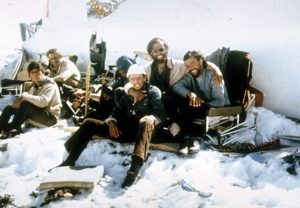 being called off, they were devastated. The crash killed 12 people instantly, leaving 33 survivors to try to stay alive until help could come. A number of the survivors were injured. At an altitude of approximately 11,500 feet, the group faced snow and freezing temperatures. There was no heat, and they only had each other to depend on. While the plane’s fuselage was largely intact, it provided limited protection from the freezing temperatures they faced. Food was scarce…mainly candy bars and wine. Even with rationing, those were gone in about a week. Now the survivors faced the most horrifying decision of their lives. Do they stay alive at all costs, including eating the bodies of the dead for food, or do they simply give up and starve to death? After a heated discussion, the starving survivors resorted to eating the corpses. Their survival instincts had kicked in, even though they knew they might be condemned by the world. Nevertheless, they would probably never forgive themselves anyway, so what the world decided made no real difference. Over the next few weeks six others died, and further disaster struck on October 29, when an avalanche buried the fuselage and filled part of it with snow, causing eight more deaths.
being called off, they were devastated. The crash killed 12 people instantly, leaving 33 survivors to try to stay alive until help could come. A number of the survivors were injured. At an altitude of approximately 11,500 feet, the group faced snow and freezing temperatures. There was no heat, and they only had each other to depend on. While the plane’s fuselage was largely intact, it provided limited protection from the freezing temperatures they faced. Food was scarce…mainly candy bars and wine. Even with rationing, those were gone in about a week. Now the survivors faced the most horrifying decision of their lives. Do they stay alive at all costs, including eating the bodies of the dead for food, or do they simply give up and starve to death? After a heated discussion, the starving survivors resorted to eating the corpses. Their survival instincts had kicked in, even though they knew they might be condemned by the world. Nevertheless, they would probably never forgive themselves anyway, so what the world decided made no real difference. Over the next few weeks six others died, and further disaster struck on October 29, when an avalanche buried the fuselage and filled part of it with snow, causing eight more deaths.
It was decided that someone would have to walk out and tell the officials that they were still alive. On December 12, with just 16 people still alive, three passengers set out for a 10 day journey to find help, though one later returned to the wreckage. After a difficult trek, the other two men finally came across three herdsmen in the village of Los Maitenes, Chile, on December 20. However, the Chileans were on the opposite side of a river, the noise of which made it hard to hear. The herdsmen indicated that they would return the following day. Early the next morning, the Chileans reappeared, and the two groups communicated by writing notes on paper that they then wrapped around a rock and threw across the water. The survivors’ initial note began, “I come from a plane that fell in the mountains.” The Chileans must have heard about the crash, and were most likely stunned to find that there were actually survivors. They hurried to notified authorities, and on December 22 two helicopters were sent to the wreckage. Six survivors were flown to safety, but bad weather delayed the eight others from being rescued until the next day. The 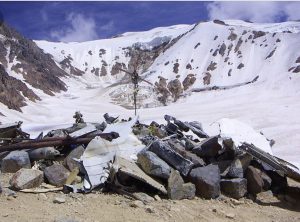 rescue was called the Miracle of the Andes. In the resulting media frenzy, the survivors revealed that they had been forced to commit cannibalism. Many people were outraged until one of the survivors claimed that they had been inspired by the Last Supper, in which Jesus gave his disciples bread and wine that he stated were his body and his blood. This helped soften public opinion, and the church later absolved the men. After watching the movie based on this event, I wondered how any of the rest of us would have handled that situation. We should never be too quick to judge people in such a situation, because we might find that given the same circumstances, we might do the exact same thing.
rescue was called the Miracle of the Andes. In the resulting media frenzy, the survivors revealed that they had been forced to commit cannibalism. Many people were outraged until one of the survivors claimed that they had been inspired by the Last Supper, in which Jesus gave his disciples bread and wine that he stated were his body and his blood. This helped soften public opinion, and the church later absolved the men. After watching the movie based on this event, I wondered how any of the rest of us would have handled that situation. We should never be too quick to judge people in such a situation, because we might find that given the same circumstances, we might do the exact same thing.
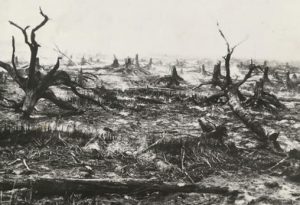 Where there is a forest, there is a possibility of a massive forest fire. The area around Moose Lake in Minnesota, had just such a fire that started on October 12, 1918. The fire, known as the Cloquet-Moose Lake fire, killed hundreds of people and leaving thousands of people homeless. The fire burned a hug area at least 1,500 square miles. The fire, which began at the rail lines near Sturgeon Lake, did the most damage in the Cloquet and Moose Lake areas. This is a region of Minnesota, north of Duluth in the eastern part of the state.
Where there is a forest, there is a possibility of a massive forest fire. The area around Moose Lake in Minnesota, had just such a fire that started on October 12, 1918. The fire, known as the Cloquet-Moose Lake fire, killed hundreds of people and leaving thousands of people homeless. The fire burned a hug area at least 1,500 square miles. The fire, which began at the rail lines near Sturgeon Lake, did the most damage in the Cloquet and Moose Lake areas. This is a region of Minnesota, north of Duluth in the eastern part of the state.
The area was really a recipe for a major disaster of this sort. The timber industry used a crude 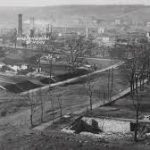 slash method in the thick forests, thus leaving behind dry scraps that were perfect kindling for wildfires. They were not careful where they left the slash either, tending to leave the scraps lying around the rail lines that carried wood from the lumber mills. Train engines of that time often gave off sparks, and when the sparks hit the slash pies, fires were nearly inevitable. The months leading up to October 1918 were very hot and dry, which made matters even worse. The fire began that October 12th, and it quickly spread due to the high winds that day. More than 200 people died in the Moose Lake area, when the fire raced into the community. Many of the local residents tried to escape the raging flames by driving down Highway 73, south of the Kettle River. The
slash method in the thick forests, thus leaving behind dry scraps that were perfect kindling for wildfires. They were not careful where they left the slash either, tending to leave the scraps lying around the rail lines that carried wood from the lumber mills. Train engines of that time often gave off sparks, and when the sparks hit the slash pies, fires were nearly inevitable. The months leading up to October 1918 were very hot and dry, which made matters even worse. The fire began that October 12th, and it quickly spread due to the high winds that day. More than 200 people died in the Moose Lake area, when the fire raced into the community. Many of the local residents tried to escape the raging flames by driving down Highway 73, south of the Kettle River. The  road had a very sharp curve that proved to be too difficult to maneuver for drivers who were speeding away from the flames surrounding them. At least 15 vehicles went off the road within minutes, which resulted in 25 deaths.
road had a very sharp curve that proved to be too difficult to maneuver for drivers who were speeding away from the flames surrounding them. At least 15 vehicles went off the road within minutes, which resulted in 25 deaths.
In all, he fire destroyed 38 towns and villages. The total dead was 453 and another 85 people were seriously burned. The area lost 4,000 houses, 6,000 barns, and 40 schools to the flames.The fire came up so quickly that there was no time to try to get the livestock out, and hundreds of thousands of farm animals also perished in the fire. It was a huge loss for area farmers. In all, the region suffered close to $100 million in damages.
 We have all heard of the atrocities that took place in Nazi Germany regarding the Jewish people. And many people might have seen the movie called Schindler’s List. When the movie came out, I did not have a real interest in the old war movies, but I really should have in this one, because it is not your typical war movie. The movie documents the actions of a member of the Nazi Party, who saw something that was morally wrong, and did something about it.
We have all heard of the atrocities that took place in Nazi Germany regarding the Jewish people. And many people might have seen the movie called Schindler’s List. When the movie came out, I did not have a real interest in the old war movies, but I really should have in this one, because it is not your typical war movie. The movie documents the actions of a member of the Nazi Party, who saw something that was morally wrong, and did something about it.
Schindler wasn’t what would be considered a moral upstanding citizen to the Christian way of thinking. He married Emilie Pelzl at nineteen, but was never without a mistress or two. When his family’s business went under, he presided over the the proceedings, and then became a salesman when opportunity came knocking in the form of the war. Schindler was never one to miss a chance to make money. He saw opportunity in Poland, so he marched in on the heels of the SS. Soon, he was deep into the black-market and the underworld..making friends with the Gestapo officials along the way…softening them up with women, money and illicit booze.

It was his newfound connections that helped him acquire the factory in Krakow during the German occupation of Poland, which he ran with the cheapest labor around…namely the Jewish people from the nearby Jewish ghetto. Schindler was a hard man, and didn’t care much about others, but somewhere along the line, something changed. When the Nazis decided to liquidate the ghetto, he persuaded the officials to allow the transfer of his workers to the Plaszow labor camp. I’m not sure what they workers thought of that situation right away, but in the end, to saved them from deportation to the death camps, for which they were grateful.
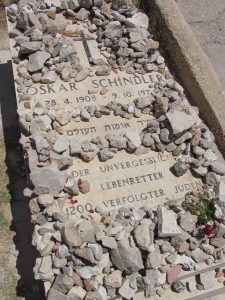
By 1944, Hitler had become more and more crazed, and all the Jews at Plaszow were to be sent to Auschwitz, but Schindler couldn’t bear to see his workers murdered by Hitler. Schindler decided to take a huge risk, and bribe the officials into allowing him to keep his workers and set up a factory in a safer location in occupied Czechoslovakia. Miraculously, they agreed to let him have his workers, probably thinking of the factory’s production, and not the fact that these Jews would not meet the horrible fate awaiting them in the death camps. So, Schindler gave them a list of his workers, and of course, that is where the name of the movie came from. By the war’s end, Schindler was penniless, but he had saved 1,200 Jews. And that makes him a very rich man, indeed. In 1962, he was declared a Righteous Gentile by Yad Vashem, Israel’s official agency for remembering the Holocaust. Oskar Schindler died on this day, October 9, 1974, and according to his wishes, he was buried in Israel at the Catholic cemetery on Mount Zion.

